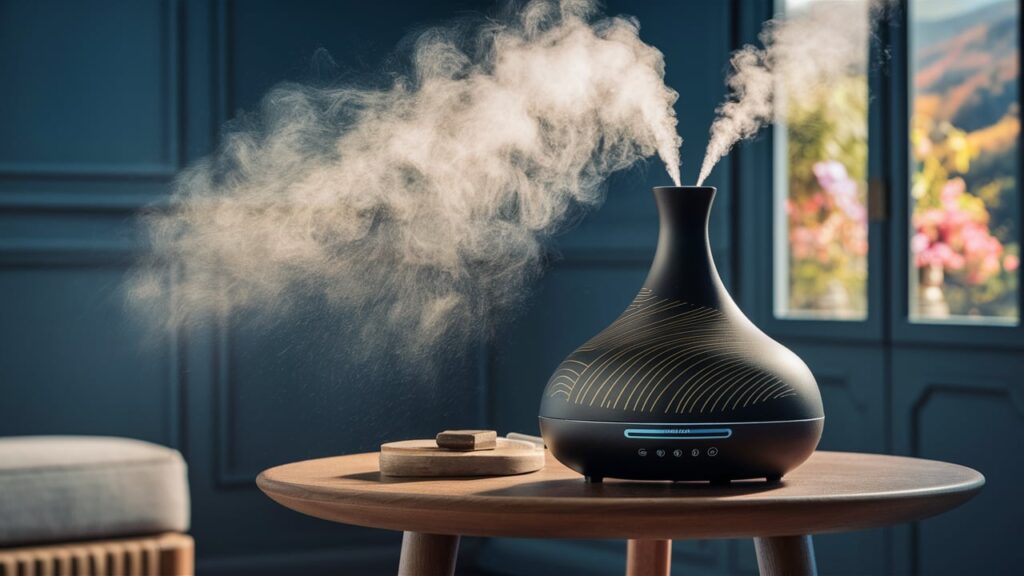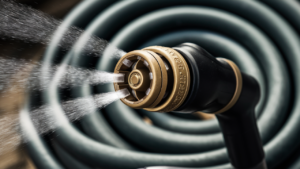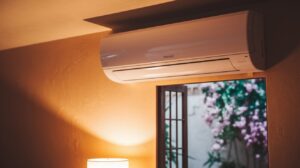Room diffusers work by dispersing essential oils into the air through various methods, such as evaporation, evaporation diffusion, heat dissemination, or using electric aromatherapy devices. These diffusers can help improve sleep quality and provide therapeutic benefits.
Reed diffusers, on the other hand, work through capillary action, where the fragrance mixture is absorbed into the sticks and released into the air. Both room diffusers and reed diffusers are safe to use and can enhance the ambiance of your home by creating a pleasant scent.
It’s important to use diffusers as intended and avoid ingesting or using them inappropriately.

The Essence Of Room Diffusers
Types Of Room Diffusers
Room diffusers come in various types, each utilizing different mechanisms to disperse the fragrance into the air. The common types of room diffusers include:
- Reed diffusers
- Ultrasonic diffusers
- Evaporative diffusers
- Heat diffusers
- Nebulizing diffusers
Benefits Of Using Diffusers
Using room diffusers offers a range of benefits, making them a popular choice for enhancing the ambiance of a space. Some key benefits of using diffusers include:
- Creating a calming and soothing atmosphere
- Masking unpleasant odors
- Promoting relaxation and stress reduction
- Enhancing mental clarity and focus
- Aiding in better sleep quality
- Supporting overall well-being through aromatherapy
The Science Behind Diffusion
Room diffusers are a popular way to fill your space with delightful scents. But have you ever wondered how they actually work? The answer lies in the science of diffusion. Let’s dive into the basic principles of diffusion and explore how scent molecules travel.
Basic Principles Of Diffusion
Diffusion is the process by which molecules move from an area of high concentration to an area of low concentration. In the case of room diffusers, essential oil molecules are released into the air and spread throughout the room through diffusion. This allows the scent to be evenly dispersed, creating a pleasant aroma.
To understand how diffusion works, think of a drop of food coloring being added to a glass of water. The food coloring molecules will slowly spread out in the water, creating a uniform color throughout. The same principle applies to room diffusers, where the essential oil molecules disperse in the surrounding air.
How Scent Molecules Travel
Now that we understand the basic principles of diffusion, let’s take a closer look at how scent molecules travel. When you add essential oil to a room diffuser, the oil is typically mixed with a carrier oil or water. This mixture is then released into the air through various diffusion methods, such as evaporation, heat dissemination, or ultrasonic vibrations.
Evaporative diffusers work by allowing the carrier oil or water to gradually evaporate, carrying the scent molecules with it. Heat dissemination diffusers use heat to speed up the evaporation process, while ultrasonic diffusers create a fine mist by vibrating the liquid mixture at ultrasonic frequencies.
Once the scent molecules are in the air, they travel through the room, interacting with the olfactory receptors in our noses. These receptors detect the scent molecules and send signals to our brain, allowing us to perceive and enjoy the fragrance.
It’s important to note that the size and weight of scent molecules can affect how far they travel. Heavier molecules may not disperse as widely, while lighter molecules can travel more easily through the air. This is why different diffusers and essential oils can produce varying levels of fragrance intensity.
In conclusion, room diffusers work by utilizing the principles of diffusion to release and disperse scent molecules throughout a space. Understanding the science behind diffusion can help you make informed choices when selecting a diffuser and essential oil combination for your desired fragrance experience.
Different Diffusing Mechanisms
When it comes to different diffusing mechanisms, understanding the various methods used in room diffusers can help you choose the best option for your needs. Let’s explore the different mechanisms behind room diffusers and how they work.
Evaporation And Its Role
Evaporation plays a crucial role in certain types of room diffusers. In this mechanism, the essential oils are placed on a pad or in a container, allowing them to gradually evaporate into the air. This process disperses the aroma throughout the room, creating a pleasant and long-lasting scent.
Heat Dissemination Explained
Heat dissemination is another method used in room diffusers. These diffusers utilize heat to gently warm the essential oils, causing them to evaporate and release their aromatic compounds into the air. The warm mist created by these diffusers not only fills the room with fragrance but also helps to create a cozy and comforting atmosphere.
Ultrasonic Diffusers
Ultrasonic diffusers use ultrasonic vibrations to break down essential oils into microparticles, which are then released as a fine mist into the air. This process not only disperses the aroma effectively but also helps to maintain the therapeutic properties of the essential oils, making it a popular choice for aromatherapy.
Nebulizer Diffusers
Nebulizer diffusers work by using pressurized air to atomize the essential oils into tiny particles, which are then released into the air in a concentrated form. This method ensures a strong and immediate dispersal of the fragrance, making it an ideal choice for larger spaces or when a more intense aroma is desired.
Evaporative Diffusers Demystified
Evaporative diffusers are a popular choice when it comes to dispersing essential oils into the air. These diffusers work on the principle of evaporation, allowing the oils to naturally diffuse and fill your space with delightful aromas. In this section, we will explore the components of evaporative diffusers and how fan-assisted diffusion works.
Components Of Evaporative Diffusers
Evaporative diffusers consist of a few key components that work together to disperse essential oils effectively. These components include:
- A reservoir or container: This is where the essential oil is placed for diffusion.
- An absorbent material: It could be a pad, filter, or wick that absorbs the essential oil from the reservoir.
- A fan: The fan helps in the evaporation process by blowing air over the absorbent material, causing the essential oil to evaporate and disperse into the air.
The absorbent material is crucial in evaporative diffusers as it acts as a medium to hold and release the essential oil molecules. The fan then aids in the evaporation process, ensuring a steady diffusion of the oil throughout the room.
How Fan-assisted Diffusion Works
Fan-assisted diffusion is a key feature of evaporative diffusers, enhancing the effectiveness of oil dispersion. Here’s how it works:
- The essential oil is placed in the reservoir of the diffuser.
- The absorbent material, such as a pad or wick, is saturated with the oil.
- The fan is activated, blowing air over the absorbent material.
- As the air passes over the oil-soaked material, it causes the oil to evaporate.
- The evaporated oil particles are then released into the surrounding air, filling the room with the desired fragrance.
This fan-assisted diffusion method ensures a consistent and even distribution of the essential oil throughout the space, allowing you to enjoy the benefits of aromatherapy.
In conclusion, evaporative diffusers are an excellent choice for dispersing essential oils. They utilize the power of evaporation and fan-assisted diffusion to create a pleasant and therapeutic atmosphere in your room. The components of evaporative diffusers, including the reservoir, absorbent material, and fan, work together harmoniously to release the aromatic molecules into the air. Whether you are looking to create a calming ambiance or invigorate your senses, evaporative diffusers are a reliable and efficient option.
Heat-based Diffusers
Heat-based diffusers work by utilizing heat to evaporate the essential oils, releasing their fragrance into the room. The heat source warms the oil, causing it to evaporate and disperse the scent. This type of diffuser is popular for its ability to quickly fill a room with aromatic scents.
Heat-Based Diffusers are a popular type of room diffusers that use heat to diffuse essential oils into the air. The heat source can be a candle, a light bulb, or an electric heating element. These diffusers work by warming the essential oil, causing it to evaporate and release its fragrance. The warm air carrying the scent then spreads throughout the room, creating a pleasant and relaxing atmosphere. Let’s explore the role of heat in diffusion and safety considerations when using heat-based diffusers.
The Role Of Heat In Diffusion
Heat is an essential element in the diffusion process of heat-based diffusers. The heat source warms the essential oil, causing it to evaporate and release its aroma into the air. The warmth also helps to spread the scent throughout the room by increasing the volatility of the oil. As the warm air rises, it carries the fragrance with it, creating a relaxing and therapeutic environment. Heat-based diffusers are effective in diffusing essential oils quickly, making them a popular choice for people who want immediate results.
Safety Considerations
While heat-based diffusers are generally safe to use, there are some safety considerations to keep in mind. Here are some tips to ensure the safe use of heat-based diffusers:
- Always place the diffuser on a stable surface, away from children and pets.
- Never leave a heat-based diffuser unattended, especially when there is an open flame involved.
- Use caution when handling the diffuser, as the heat source can get hot and cause burns.
- Keep the diffuser away from flammable objects, such as curtains or papers.
- Use high-quality, pure essential oils to avoid potential allergic reactions or adverse effects.
By following these safety considerations, you can enjoy the benefits of heat-based diffusers without any risks or hazards. With their quick and effective diffusion process, heat-based diffusers are a great way to create a relaxing and therapeutic environment in your home or office.
Ultrasonic Diffusers: A Closer Look
Ultrasonic diffusers are a popular choice for room diffusers because of their unique working mechanism. These diffusers use ultrasonic vibrations to break down essential oils into a fine mist, which is then dispersed into the air. The mist not only adds a pleasant aroma to the room but also helps to humidify the air, creating a more comfortable environment.
Functionality Of Ultrasonic Diffusers
Ultrasonic diffusers are one of the most popular types of essential oil diffusers. They work by using ultrasonic vibrations to break down the essential oil into tiny particles, which are then dispersed into the air. This creates a fine mist that not only smells great but also has many health benefits.
The ultrasonic diffuser has a small tank of water that is combined with a few drops of essential oil. When turned on, the diffuser uses high-frequency vibrations to create a mist that is then released into the air. The mist contains tiny particles of essential oil, which are then inhaled by the user.
Maintaining Ultrasonic Diffusers
Maintaining your ultrasonic diffuser is important to ensure it continues to work properly and provide the best possible experience. Here are some tips for maintaining your diffuser:
- Regularly clean the diffuser with a mixture of water and vinegar to prevent buildup of oils and other residue.
- Change the water and essential oil regularly to prevent any contamination or buildup.
- Use distilled water instead of tap water to prevent mineral buildup.
- Store the diffuser in a cool, dry place when not in use.
By following these simple steps, you can keep your ultrasonic diffuser working properly and enjoy the many benefits of aromatherapy. So, go ahead and try out an ultrasonic diffuser today to experience the wonderful benefits of essential oils.
Nebulizing Diffusers
When it comes to room diffusers, nebulizing diffusers are a popular choice among essential oil enthusiasts. These diffusers work by breaking down essential oils into tiny particles and dispersing them into the air, creating a fine mist of aromatic goodness. In this article, we will explore the nebulizing process and the benefits of using nebulizing diffusers.
The Nebulizing Process
The nebulizing process involves transforming essential oils into a fine mist without the use of heat or water. This is achieved through a specially designed nebulizer, which consists of a glass chamber and a small air pump. Here’s how it works:
- The essential oil is poured into the glass chamber of the nebulizer.
- The air pump creates a stream of pressurized air.
- This pressurized air forces the essential oil to rise up through a small tube.
- As the essential oil reaches the top of the tube, it is atomized into tiny particles.
- These tiny particles are then released into the air, creating a fine mist of essential oil.
This nebulizing process ensures that the essential oil is not diluted or altered in any way, allowing you to experience the full therapeutic benefits of the oil.
Benefits Of Nebulizing Diffusers
Nebulizing diffusers offer several advantages over other types of diffusers:
- Pure and potent aroma: Since nebulizing diffusers do not use heat or water, they maintain the integrity and potency of the essential oils. This means you can enjoy the full aromatic experience and therapeutic benefits of the oils.
- Customizable intensity: Nebulizing diffusers often come with adjustable settings that allow you to control the intensity of the aroma. You can choose to have a subtle scent or a more powerful fragrance, depending on your preference.
- Efficient and effective: The nebulizing process disperses essential oils into the air in a highly efficient manner. The fine mist of particles remains suspended in the air for longer periods, ensuring maximum coverage and effectiveness.
- No water or heat required: Unlike other diffusers that rely on water or heat, nebulizing diffusers operate without any additional elements. This makes them convenient and easy to use, without the need for refilling water or worrying about heat sources.
In conclusion, nebulizing diffusers offer a pure and powerful way to enjoy the benefits of essential oils. By using the nebulizing process, these diffusers create a fine mist of essential oil particles that can enhance your well-being and create a pleasant atmosphere in your living spaces.
Reed Diffusers: Simple Yet Effective
Reed diffusers are a simple and effective way to add a delightful fragrance to any space. They work by utilizing reed sticks to draw up scented oil and disperse it into the air, creating a long-lasting and subtle aroma. Let’s delve into how reed diffusers work and the best practices for using them.
How Reed Diffusers Work
Reed diffusers operate on a straightforward principle. The reed sticks, typically made of rattan, are porous and absorb the scented oil from the container. The oil then travels up the reeds and gradually diffuses into the air, releasing the fragrance into the surrounding space.
Best Practices For Reed Diffusers
For optimal performance, it’s essential to position the reed diffuser in a draft-free area to prevent the oil from evaporating too quickly. Additionally, flipping the reeds regularly helps to refresh the scent and maintain a consistent fragrance level. It’s advisable to place the diffuser on a stable surface to prevent accidental spills and to keep it out of reach of children and pets.
Choosing The Right Diffuser For Your Space
Choosing the right diffuser for your space is crucial in getting the desired effect. Room diffusers work by breaking down essential oils into small molecules and dispersing them into the air, providing a pleasant and relaxing ambiance. Different types of diffusers work in different ways, such as evaporative diffusers, heat dissemination, pottery diffusers, electric aromatherapy diffusers, and ultrasonic diffusers.
When it comes to creating a pleasant and inviting atmosphere in your home or office, room diffusers are a popular choice. These devices are designed to disperse essential oils into the air, filling the space with delightful scents and providing numerous benefits for your well-being. However, with so many diffuser options available, it can be overwhelming to choose the right one for your specific needs. In this section, we will explore the factors to consider and compare different types of diffusers to help you make an informed decision.
Factors To Consider
Before selecting a diffuser, there are a few important factors to keep in mind. These considerations will ensure that you choose a diffuser that is suitable for your space and preferences.
1. Room Size: The size of the room plays a crucial role in determining the type of diffuser you should opt for. Larger spaces may require diffusers with a higher mist output or those that can cover a larger area effectively.
2. Run Time: Consider how long you want the diffuser to run continuously. Some diffusers have shorter run times, while others can operate for several hours or even throughout the day.
3. Noise Level: If you prefer a quiet environment, look for diffusers that operate silently. This is especially important if you plan to use the diffuser in your bedroom or workspace.
4. Lighting Options: Some diffusers come with built-in LED lights that can create a soothing ambiance. If you enjoy subtle lighting effects, look for diffusers with customizable lighting options.
5. Maintenance and Cleaning: Ease of maintenance and cleaning should also be taken into account. Look for diffusers that are simple to clean and maintain to ensure they continue to work efficiently.
Comparing Diffuser Types
There are several types of diffusers available in the market, each with its own unique characteristics. Let’s compare the most common types to help you make an informed decision:
1. Ultrasonic Diffusers: These diffusers use ultrasonic vibrations to break down essential oils into a fine mist, which is then dispersed into the air. Ultrasonic diffusers are known for their quiet operation and ability to maintain the therapeutic properties of essential oils.
2. Evaporative Diffusers: These diffusers work by evaporating essential oils using a fan or heat source. They are typically more affordable and portable but may have a shorter scent duration compared to other types of diffusers.
3. Nebulizing Diffusers: Nebulizers disperse undiluted essential oils directly into the air, creating a powerful and concentrated aroma. They are ideal for larger spaces and for those seeking intense aromatherapy benefits.
4. Reed Diffusers: Reed diffusers use wooden reeds to absorb and slowly release essential oils into the air. They are a great option for those who prefer a continuous, subtle scent without the need for electricity or water.
By considering these factors and understanding the different types of diffusers available, you can choose the right diffuser that suits your space, lifestyle, and preferences. Whether you are looking for a quiet and compact diffuser for your bedroom or a powerful nebulizing diffuser for a large living area, there is a diffuser out there that will meet your needs.
Maintaining Your Room Diffuser
Room diffusers are a popular way to disperse pleasant scents and essential oils throughout your space. To ensure your room diffuser continues to function effectively, it’s essential to maintain it properly. Here are some key aspects of maintaining your room diffuser:
Cleaning And Care
Regular cleaning and care are crucial to keep your room diffuser in optimal condition. Follow these simple steps to maintain your diffuser:
- Unplug the diffuser before cleaning.
- Empty any remaining water and essential oils from the reservoir.
- Use a soft cloth to wipe the inside of the reservoir and the exterior of the diffuser.
- For stubborn residue, mix water and vinegar to gently clean the diffuser.
- Ensure all components are completely dry before using the diffuser again.
Troubleshooting Common Issues
Occasionally, room diffusers may encounter issues that affect their performance. Here are some common problems and their solutions:
- If the diffuser is not misting properly, clean the ultrasonic plate with a cotton swab dipped in rubbing alcohol.
- If the diffuser is not turning on, check the power source and ensure it is properly plugged in.
- If the diffuser produces a weak scent, try using a different type of essential oil or adjusting the amount used.
- If the diffuser is making unusual noises, check for any obstructions or debris inside the unit.
Health And Safety With Room Diffusers
Room diffusers are popular for their pleasant aromas and potential health benefits. However, it’s essential to understand the safe use of diffusers and their potential health benefits to ensure a positive experience.
Safe Use Of Diffusers
When using room diffusers, it’s important to follow safety guidelines to prevent any potential hazards. Ensure proper ventilation in the room to prevent the accumulation of essential oil vapors. Place the diffuser on a stable surface away from the reach of children and pets. Additionally, always use the recommended amount of essential oils and avoid overfilling the diffuser.
Potential Health Benefits
Room diffusers can offer potential health benefits through aromatherapy. Essential oils such as lavender and eucalyptus may help promote relaxation and improve sleep quality. Furthermore, certain essential oils have antimicrobial properties that can contribute to a healthier indoor environment. However, it’s important to use high-quality, pure essential oils to maximize the potential health benefits.
Integrating Diffusers Into Your Lifestyle
Discover the benefits of integrating diffusers into your lifestyle and learn how room diffusers work. By using various methods such as evaporation, heat dissemination, and ultrasonic technology, diffusers disperse essential oils into the air, promoting relaxation and wellness in your living space.
Incorporating Aromatherapy Diffusers Into Your Lifestyle
Aromatherapy diffusers are an excellent way to enhance your lifestyle. Whether you’re trying to improve your sleep quality or create a relaxing atmosphere in your home, diffusers can help achieve these goals. There are several types of diffusers available, such as electric, ultrasonic, and nebulizer diffusers. Each of them works differently, but they all have one thing in common: they disperse essential oils into the air, providing a pleasant scent and various therapeutic benefits.
Incorporating Aromatherapy Diffusers And Sleep Quality
If you’re struggling to sleep, aromatherapy diffusers can help. Diffusing lavender oil, for example, can promote relaxation and better sleep quality. You can also try diffusing other calming oils such as chamomile, ylang-ylang, or bergamot. Moreover, diffusers can help create a peaceful atmosphere in your bedroom, making it easier to fall asleep and stay asleep throughout the night.
How To Integrate Diffusers Into Your Daily Routine
Integrating aromatherapy diffusers into your daily routine is easy. You can place a diffuser in your living room, bedroom, or office and enjoy the benefits of essential oils throughout the day. You can also try using different essential oils for different purposes. For example, peppermint oil can help improve focus and concentration, while lemon oil can boost your mood and energy levels.
In conclusion, aromatherapy diffusers are an excellent addition to your lifestyle. They can help improve your sleep quality, create a relaxing atmosphere, and provide various therapeutic benefits. By integrating diffusers into your daily routine, you can enjoy the benefits of essential oils throughout the day and enhance your overall well-being.
Frequently Asked Questions
Is It Ok To Sleep With A Diffuser In Your Room?
Yes, it’s okay to sleep with a diffuser in your room. Essential oil diffusers can help improve sleep quality and provide therapeutic benefits.
Are Room Diffusers Good For You?
Room diffusers are good for you as they help improve the ambiance of your space and provide the therapeutic benefits of essential oils. They work by releasing a fine mist or scent into the air, creating a pleasant and relaxing environment.
However, it is important to use them as intended and avoid ingesting or applying them on the body. Reed diffusers, in particular, are safe to use and add a lovely fragrance to your home.
Do You Put All The Sticks In A Diffuser?
No, you don’t put all the sticks in a diffuser. Only a few sticks are inserted.
How Do Diffusers Make Mist?
Diffusers make mist by using different methods. Aromatherapy nebulizers heat the air in the base, causing the essential oil to turn into a fine mist. Evaporative diffusers disperse the oil by forcing air through an oil-soaked pad or filter. Reed diffusers work through capillary action, where the oil is absorbed into the sticks and released into the air.
Conclusion
Room diffusers work by using various methods such as evaporation, heat dissemination, and ultrasonic technology to disperse essential oils into the air. These diffusers not only provide a pleasant aroma but also offer therapeutic benefits, including improving sleep and reducing stress and anxiety.
It’s important to use diffusers safely and correctly, following instructions provided by the manufacturer. With a wide range of options available, choosing the right diffuser for your needs can enhance your home environment and overall well-being.





